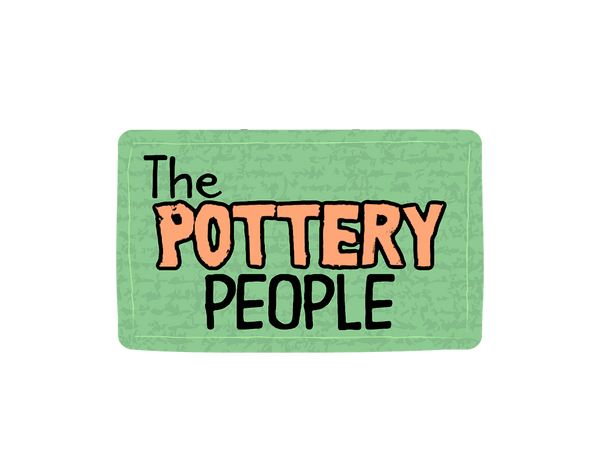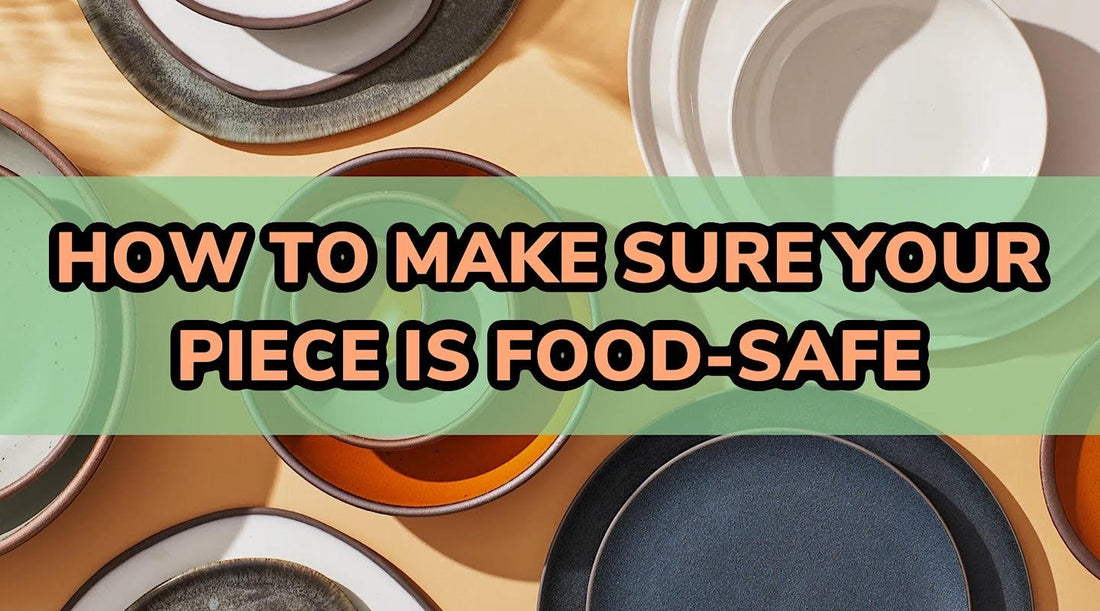Many of the creations that you will make will be functional pieces, whether that be plates, bowls, mugs, cooking dishes. For these items, you will need to make sure that you take the necessary steps to make them food safe.
This is fairly straightforward. If you have taken all of the necessary steps, you can be confident that your pottery is food safe.

Food-safe pottery design

The first thing to consider when planning a food-safe piece, is the shape. Some designs are more bacteria-friendly than others. Designs that have small nooks and crevices can very often accumulate a build-up of bacteria in hard to clean spots.
Another thing about to consider about the design, is that your piece will need to withstand repeated using and washing.
The ideal functional design for a piece that will be used with food would be:
-Simple
-Smooth
-Structurally strong
Using food-safe clay

The next aspect to consider, is the type of clay that you will use. Stoneware and porcelain are usually the go-to option for food-safe pieces. Due to it being less strong and more porous, earthenware is used a lot less often for food-safe ceramics.
Air dry clay can be food-safe, but this depends on the type. Check the label for information on this.
Polymer clay contains plasticisers, which can leach into food. It’s possible to make polymer clay food-safe, but you will need to take extra precautions.
Food-safe decorations
We recommend not decorating the parts of the piece that will be in direct contact with the food.
If you would like to decorate these parts, you can get specific food-safe paints.
Any paint you apply will need to be glazed, so that is not directly exposed to the food.
Select the correct glaze for your project

Picking the right glaze is one of the most important factors when making sure that your creation is food-safe.
There are two main factors that go into making a glaze as food-safe as possible: Stability and non-toxicity.
Stability:
The glaze needs to be insoluble. It needs to be able to resistant to dissolving, even with by highly acidic foods. A good food-safe glaze will have been tested to see if it is stable enough to be deemed food-safe.
Its better to avoid special glazes such as matte or cracked glazes, as they are less likely to be safe for food.
It’s also important to choose a glaze that will be resistant to being scraped or chipped off by cutlery.
Toxicity:
If you make sure to use 100% non-toxic materials, then you can have extra piece of mind that (even if the stability of your glaze fails you) you will not end up with any toxic materials in your food.
Firing your food safe pottery

To make sure your pottery reaches the right hardness and your glaze covers your project completely, it's crucial to fire your ceramic ware correctly and reliably. An electric kiln with a programmable element helps maintain a steady temperature, allowing your pieces to be fired for just the right amount of time.
Testing your food safe pottery
To ensure your ceramics are safe for food, there are a few straightforward tests you can perform to check their durability and safety.
Start by testing the glaze's resistance to acidity. Apply lemon juice to a glazed section of your pottery, place the remaining lemon on it, and leave it overnight. If you notice a change in the glaze's color the next day after rinsing, it suggests the glaze might not be suitable for acidic foods.
Another method involves assessing the glaze's integrity with a microwave test. Simply fill the ceramic piece with water and microwave it for a minute. A suitable glaze should prevent the pottery from absorbing water and getting excessively hot. If the pottery becomes very hot or if the glaze cracks, it's an indication that the glaze might not be reliable.
The glaze plays a crucial role in making ceramics food-safe, acting as a barrier against potentially harmful substances and ensuring the piece's durability and longevity for its intended use.
If you have made sure to follow all of the steps outlined above, you can be confident that your piece is food-safe.
Remember, we are always here to help. If you have any further questions (or you have anything that you’d like to add) don’t hesitate to ask us at info@thepotterypeople.co.uk

